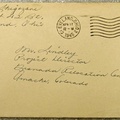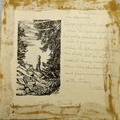Read Part 1 >>
United Methodist Asian American Summer Camp
In 1974, Reverend Peter Chen of San Jose Japantown’s Wesley United Methodist Church and Reverend Harry Murakami of Livingston United Methodist Church created United Methodist Asian American Summer Camp (commonly referred to as Asian Camp) since the other summer camps of that era “did not meet their needs or speak to their unique experiences as ethnic minorities.”
Chen also believed that “Asian-American youths could become a dynamic, powerful force within church once they became united as a group.” Reverends Chen and Murakami collaborated with other Asian American United Methodist churches, rather than just Japanese American churches, in their efforts to contribute to the development of Asian America.
By 1980, Asian Camp’s attendance reached over 200 participants that represented churches from California, Hawaii, Oregon, Colorado, and even some parts of the East Coast. Although the majority of the camp was of Japanese ancestry, Chinese, Fijian, Korean, Filipino, and Samoan ethnic groups were also present. According to the 1980 Asian Camp booklet:
Asian-Camp’s rapid growth and success can be attributed to the fact that it is a Christian camp which dares to implement non-traditional Christian means in helping young people deal with the issues and problems which confront them in today’s ever-changing world. The learning experiences presented at camp challenge each individual to critically examine his/her Asian identity, personal feelings towards self and others, and one’s social responsibilities, all form a Christian perspective. While we may not necessarily be a “religious” camp, we have found a way to carry the message of Christianity in contemporary forms to Asian-American youths. (“History of Asian Camp” 1980)
Asian Camp’s growth mirrored the development of the pan-ethnic Asian American identity that spawned during the late 1960s. However, due in large part to the different immigration patterns of non-Japanese Asian Americans and their subsequent growth in the United States, Asian Camp’s target demographic has since changed from a pan-Asian group to primarily youth from Japanese American churches. Yet, Asian Camp’s pan-Asian roots are instrumental in helping address issues that face today’s increasingly multiethnic and multiracial Japanese American youths.
Despite declining attendance during the mid- to late-1990s, when camp rosters regularly listed sixty to seventy campers, Asian Camp is currently in a resurgent phase: 112 campers attended Asian Camp 2006. The increase in camper attendance can be attributed to increased participation from churches outside of California. This swing in geography has made Asian Camp less “California-centric” and is just one example of how Asian Camp is constantly evolving.
Despite structural changes in Asian Camp, its primary goal of creating a safe space for identity formation and social dialogue to occur has remained constant. This voice of fostering community growth is reflected in the current mission statement included in the most recent booklet:
United Methodist Asian American Summer Camp has a long history of empowering youth and young adult ministry. Challenging ideas in the understanding of and involvement in Christian witness and action, Asian Camp’s ministry has a legacy of exposing youth to social issues programming. Past program topics have examined issues of race, class, substance abuse, violence and peer pressure. In an atmosphere of love and acceptance, we wrestle with God’s call for social justice and responsibility in today’s modern world. Youth are nurtured and challenged, exploring ideas relevant to their lives at and away from camp. Over the past 32 years, Asian Camp has been a place for youth to reflect upon and grow in their relationships with God and to come together in a community of fellowship. (“Mission Statement of Asian Camp” 2006)
By comparing the two Asian Camp quotations—separated by 26 years—one could argue that the voice of Asian Camp has become more “religious” in the 2006 mission statement. Yet, regardless of how the rhetoric concerning Asian Camp has evolved, socially positive messages that encourage community development and civic engagement have carried over through the decades as cultural boundaries that cannot be neglected.
NCJCCF Junior High Camp and Senior High Camp
During the 1960s, the Northern California Japanese Christian Church Federation (NCJCCF) sponsored a Junior High Camp and a Senior High Camp. Some of the churches that were instrumental in the development of these camps included Wesley United Methodist Church in San Jose, Aldersgate United Methodist in Palo Alto, Buena Vista United Methodist Church in Alameda, and Sacramento Japanese United Methodist Church in Sacramento.
By creating two different camps to address the different issues facing junior high school-age youths versus high school-age youth, both of these camps quickly attracted significant groups of Japanese American youths from throughout Northern California. Junior High Camp and Senior High Camp generally followed the formulas for a weeklong summer camp laid before them by predecessors such as the Lake Sequoia Retreat.
In the 1980s, these two camps were primarily targeted for the new Yonseis who were now reaching adolescence in their Japanese American Christian churches. By the late 1990s, Senior High Camp suffered from low camper attendance and ultimately folded due to competition with Asian Camp. Eventually, most of those involved with Senior High Camp aligned with Asian Camp. Meanwhile, Junior High Camp continued to operate and grow. In 2002, it began to outreach heavily to Southern California churches. In fact, in recent years, the campers from Southern California outnumbered those from Northern California at Junior High Camp.
Present-day Camp Structure
The two summer camps researched in this study, Asian Camp and Junior High Camp, share much of the same structure, but are geared for different age groups. Junior High Camp accepts campers from incoming sixth through ninth grade, while Asian Camp accepts campers from incoming ninth grade through second-year college. Essentially, a camper would naturally progress from Junior High Camp to Asian Camp as s/he gets older. Today, the two camps collaborate and work around each other’s schedules in order to give more Japanese American youths more opportunities to become involved.
Both of the summer camps take place at retreat locations in rural areas that are generally a few hours driving distance away from metropolitan areas. Some examples of previous campsites include Ponderosa Pines Christian Camp in Rolling Springs, California (near San Bernadino), and Camp Cazadero in Cazadero, California (near Santa Rosa). By having the summer camps in these areas, it is assumed that the campers can better remove themselves from their daily routines and concentrate on the camp community.
Asian Camp and Junior High Camp share a similar schedule for the week. Each year, the camps’ respective directing teams create a theme and spend several months training counselors. The counselors work in pairs to facilitate small groups during the week of camp. These coed small groups can range in size from approximately six to twelve campers, and are based on age. Also, campers are assigned to single-sex cabins supervised by counselors and other camp staff.
Both camps adhere to a strict schedule in order to maximize their week. Mandatory worship services—which include contemporary Christian songs, sermons, and announcements—take place once or twice a day. A large portion of the week is spent in the small groups, which gives the youth an opportunity to dialogue with others in a much more personal setting.
Also, both of the camps have camp-wide programs that involve everyone, regardless of age or sex. Some examples include a club-style dance featuring a DJ, and a talent sharing show, which gives the campers an opportunity to showcase their talents with the entire camp. Each activity is designed to encourage interaction and fellowship between the campers. Even for meals, campers are randomly assigned tables to sit at in an effort to minimize social cliques.
Since Asian Camp and Junior High Camp are geared for different age groups, they also have programming that is specific to their campers. Junior High Camp features a water balloon fight and an evening program that introduces concepts such as diversity. Likewise, Asian Camp schedules a program on social justice that is more appropriate for high school students.
Previous social justice programs have covered issues such as the 9/11 tragedy and the Columbine High School massacre. For the program on 9/11, Japanese American filmmaker Lina Hoshino was invited to present and discuss her film Caught In Between, which illustrated parallels between post-September 11th Muslim Americans and post-Pearl Harbor Japanese Americans. As for the program on the Columbine massacre, some of the campers and camp staff who attended or are alumni of Columbine High School shared their personal experiences on the shootings.
Aside from the religious and identity lessons that are learned at camp, many of the youths also benefit from the inherent social opportunities, such as the development of romantic relationships. The campers can find people whom they can connect to in new ways, due to their multiple points of commonality. Several stories of prom dates and even future spouses have come from past Japanese American Christian youth camps.
Despite the innocent adolescent mischief that takes place at the camps, the camps still retain their Christian background and serve as a place for ethical lessons to be taught. Besides the counselors and directors, there are always ministers and/or youth pastors present to enforce the integrity of the camps.
Parents generally have few concerns putting their trust in these individuals that their children will be in a safe space throughout the week. According to Reverend Roger Morimoto, a Sansei from Aldersgate United Methodist Church in Palo Alto, California (who himself was a product of the camps), “Japanese American camps do things in a style or a way that are very effective, that are very positive in the moral standpoint.”
To be continued...
© 2011 Dean Adachi





